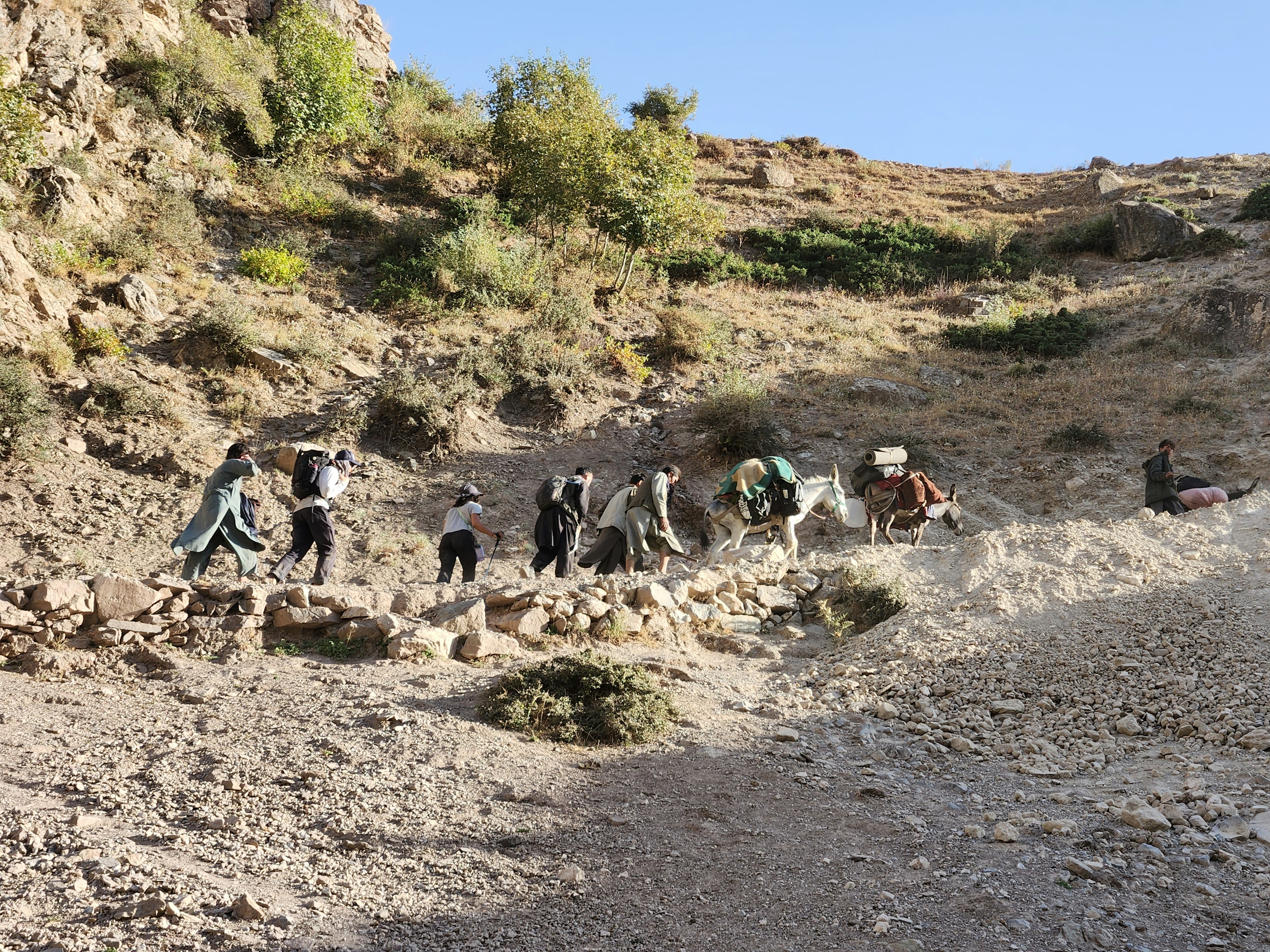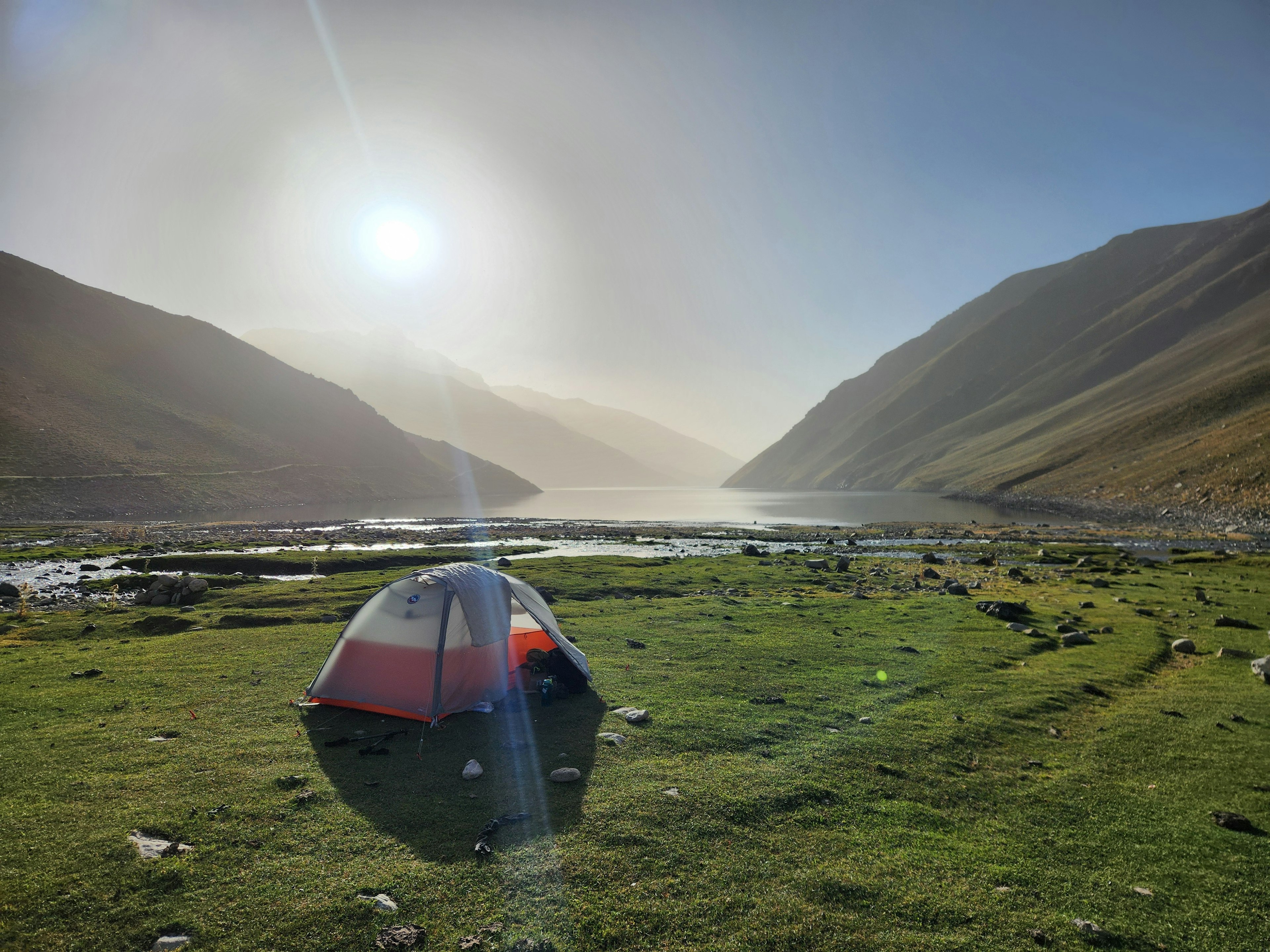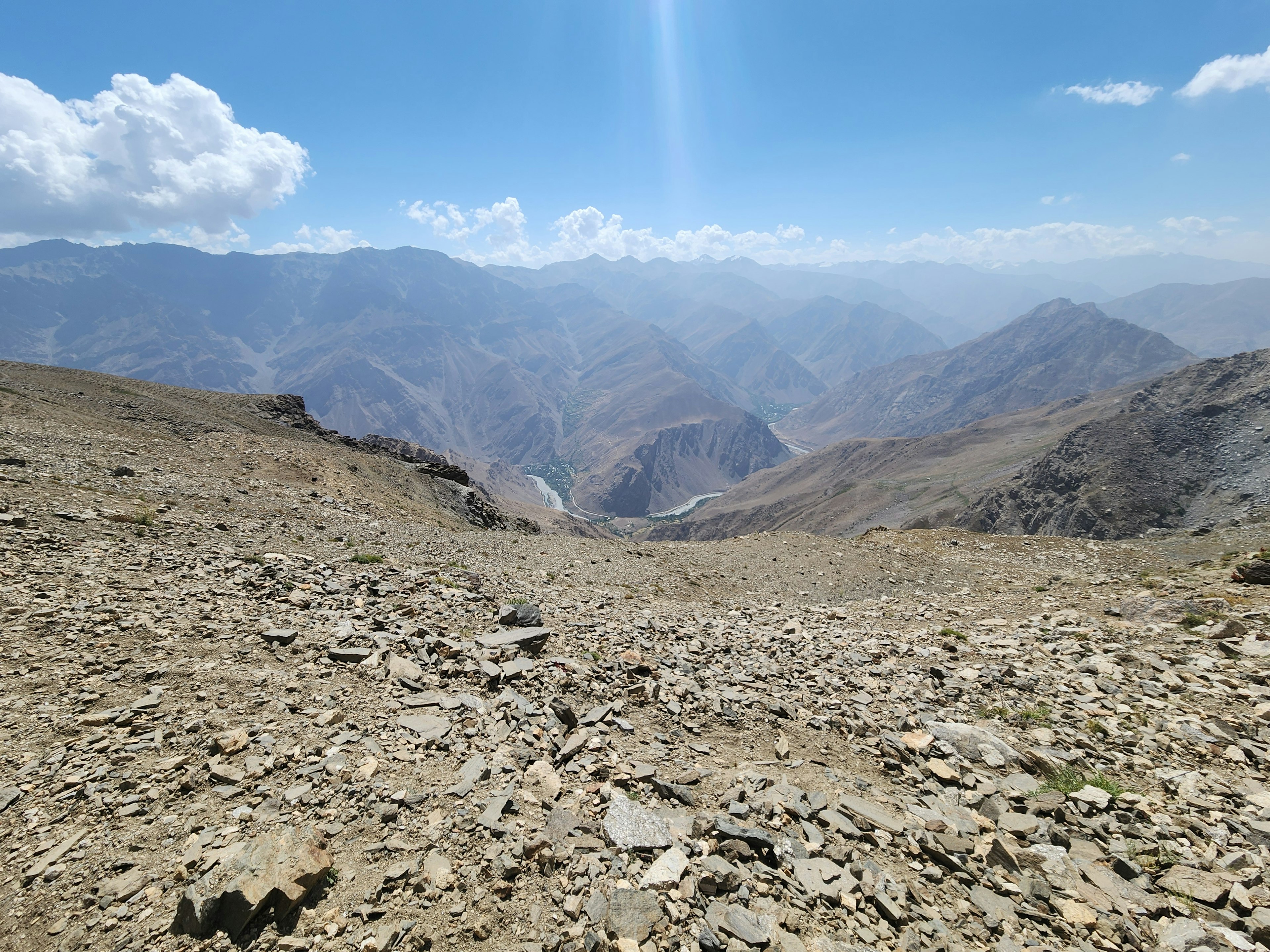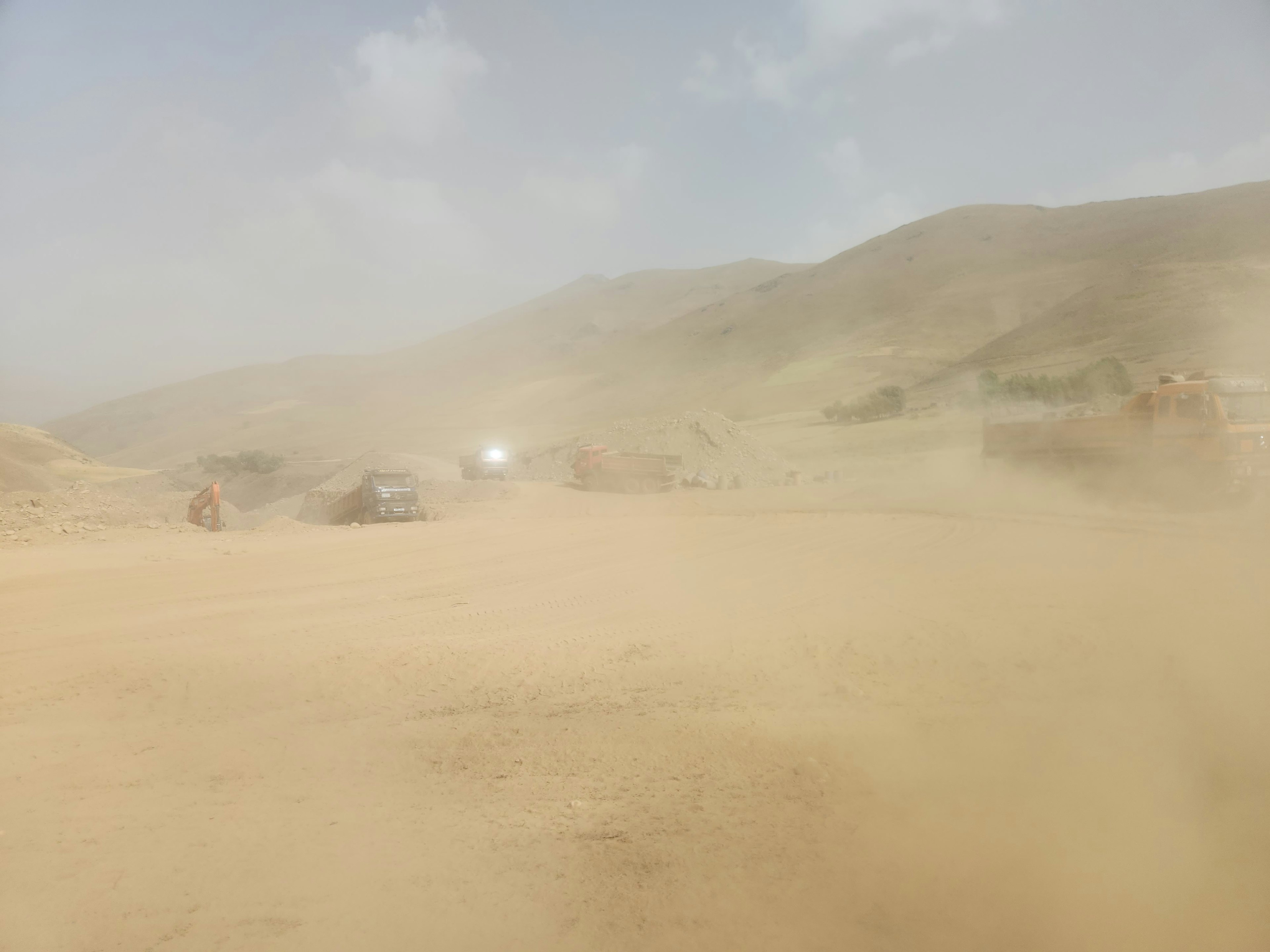Afghanistan 2024

The 2024 expedition consisted of an independent team of four endeavoring to complete the groundwork necessary to validate routes and related map data for the Mapping the Afghan Pamir project. The Mapping the Afghan Pamir project is an effort to create, validate, and distribute a map of treks and information for trekkers in order to develop adventure tourism as an industry in the region with an eye to improving the economic outlook for the local communities that typically have only herding as a means of making a living.
Many months of planning for an expedition in the Wakhan Corridor led us up to a point a few weeks before departure where we learned that the Wakhan had suddenly closed to visitors indefinitely. This unprecedented situation had us hurrying to spin up viable alternatives in order to best use the time and resources invested. Due to the enthusiastic work put in by the team, several routes were proposed. After much discussion we eventually settled on a route that began at Lake Shiva in Badakhshan Province and then looped around to the North and West.

In mid August, the team rendezvoused in Dushanbe, Tajikistan, purchased supplies, and traveled into Afghanistan via hired car. Our fixer (a trusted local contact that specializes in solving complex logistical issues) met us at the border and guided us through what was, for the bulk of the team, our first experience face to face with the Taliban. It was a smooth, if slow process of getting through the border, and Taliban interactions went relatively well throughout the trip.
A few days of travel later we were camping on the shores of Lake Shiva, having hired donkeys to use as pack animals and a local herder to guide us. The trek ended up lasting ten total days, including two rest days. The route took us through the Hindu Kush, an area largely characterized by steep, arid valleys bisected by swift rivers, regular settlements (both permanent and seasonal), and large numbers of sheep and goats. Long days of rocks, dust, and sweeping vistas led us through a landscape apparently parted in time from the rest of the world.

Local herders, their families, and their communities proved incredibly welcoming, despite most of them never having had ‘tourists’ come through before. Local communities were generously hospitable with gifts of flatbread, goat butter, and even some cheese on occasion to supplement the ever present tea, as well as allowing us to camp near their settlements. We frequently left small gifts of food to help compensate for their generosity with what little they have.
In each settlement we asked if they would be interested in having tourists in the future, and we received positive responses across the board (though the long term consequences of inviting foreign visitors is something we are still analyzing with a critical eye).
The last couple of days of our trek gave us some of the most beautiful views to be had thus far, as well as an unexpected long walk through a set of valleys being mined for gold. That walk gave us a perspective on the stark reality of the rampant damage (both ecologically and to the local communities) caused by gold mining in the region.

Upon wrapping up the trek we took a vehicle to Ishkashim, just outside the entrance to the Wakhan, and spent a couple of nights rest there. From there we spent a few days in Kabul and Mazar i Sharif, and then headed back over the border to Dushanbe.
Within a couple of days of returning to Dushanbe our team turned our trekking data into an itinerary and sent it off to our fixer as an option for groups in the future.
This expedition was the first time in Afghanistan for three of the four team members, including myself. It was thus a learning opportunity, and we made the most of it.
A Few Takeaways:
- Our team was mixed-gendered and thus we were provided a momentary insight into the dismal conditions faced by women in Afghanistan on a daily basis. The oppression is so severe as to be legitimately considered a gender apartheid. The reality is appalling and cannot be understated.
- The Taliban is not a monolithic entity. It is composed of a large variety of people (except women) with a wide variety of backgrounds, beliefs, and desires for the future. By and large they seem like the dog that has caught the mail truck and doesn’t know quite what to do with it. I will be watching the future of the Taliban as they grapple with the realities of managing a country instead of fighting for control of it. The complexities of holding together and using effectively a massive organization centered around (and glued together by) a driving focus that has fundamentally changed will certainly take their toll, but the outcome is far from clear to me.
- The more dynamic and complex the environment, the more flexibility is a key mindset. Planning with this in mind is critical to success in the field.
My deepest thanks to all that made this journey possible, including my wife Molly Fae, JC, FE, DO, KE, GS, MD, AZ, D, D, and S.
Read Jan's writeup here.
The Wakhan Corridor has since reopened to visitors and another expedition is being planned.
Those interested are welcome to apply.